Resignation Letter Template for Canada
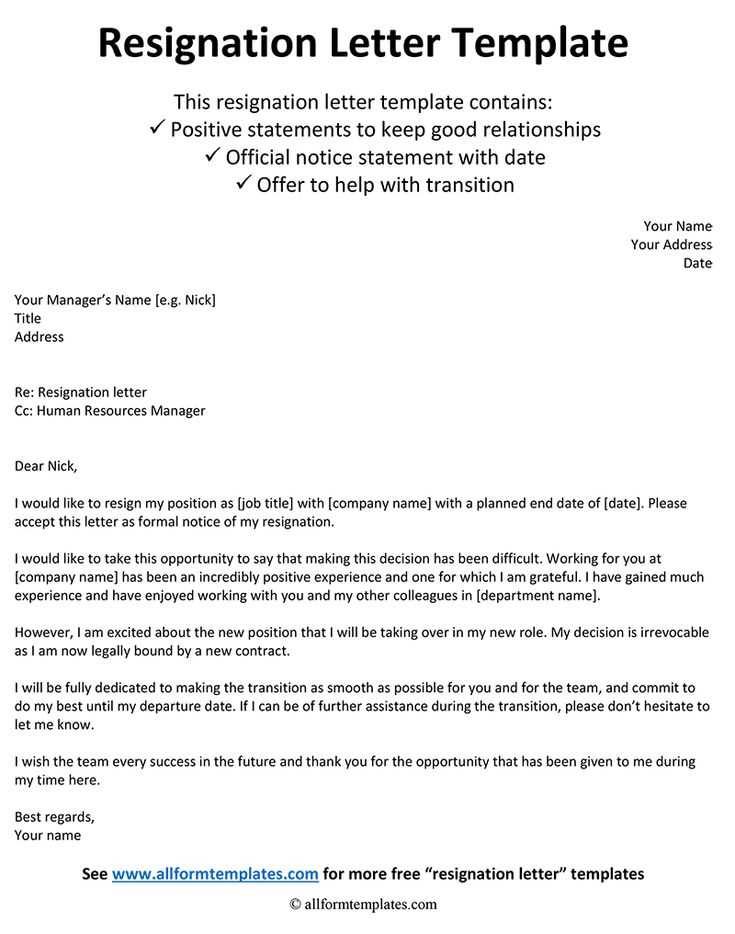
When leaving a job, it’s essential to express your decision clearly and respectfully. A well-written document can help ensure a smooth transition and maintain positive relationships with your employer. It’s important to convey your intentions in a professional manner, which will leave a lasting impression and may help with future opportunities.
Crafting a formal announcement is not only about informing your employer but also about demonstrating courtesy and professionalism. The right approach can make the process more transparent and avoid misunderstandings. In many cases, providing advanced notice and expressing gratitude can lead to a positive reference down the road.
In this guide, you’ll find the necessary components to create a proper exit statement that fits any situation. Whether you’re transitioning to a new role or pursuing other opportunities, having a structured approach will make the process much easier and help you leave on good terms.
Why Resigning Professionally Matters
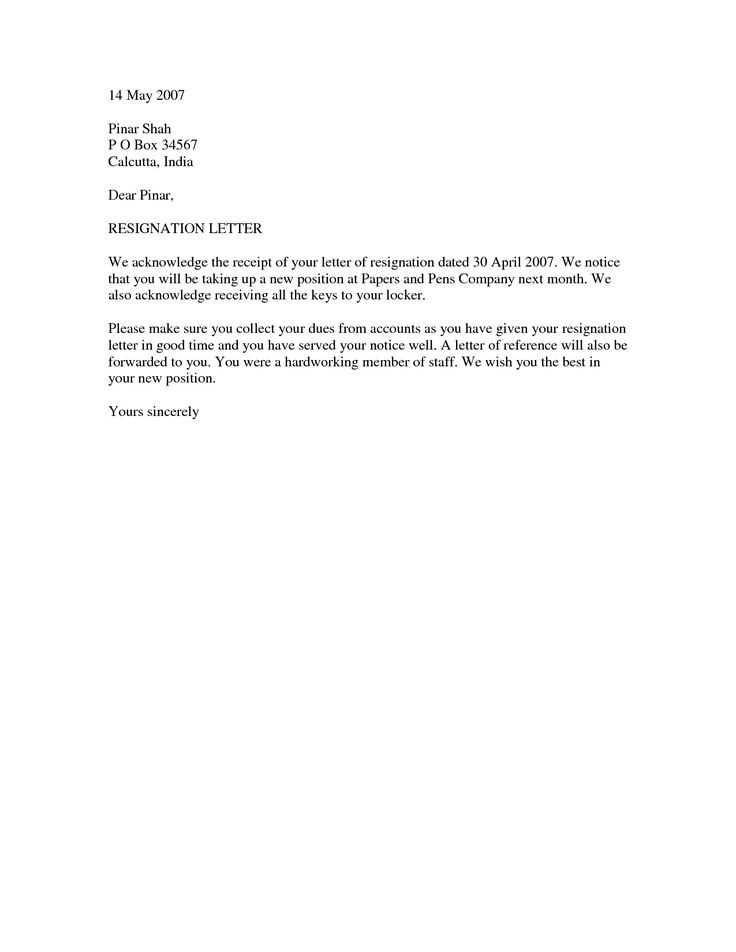
Exiting a position in a respectful and well-considered manner is crucial for maintaining a positive professional reputation. How you handle your departure can significantly impact future opportunities and relationships with colleagues and employers. A thoughtful approach shows that you are responsible and value the time spent with the organization.
Leaving on Good Terms
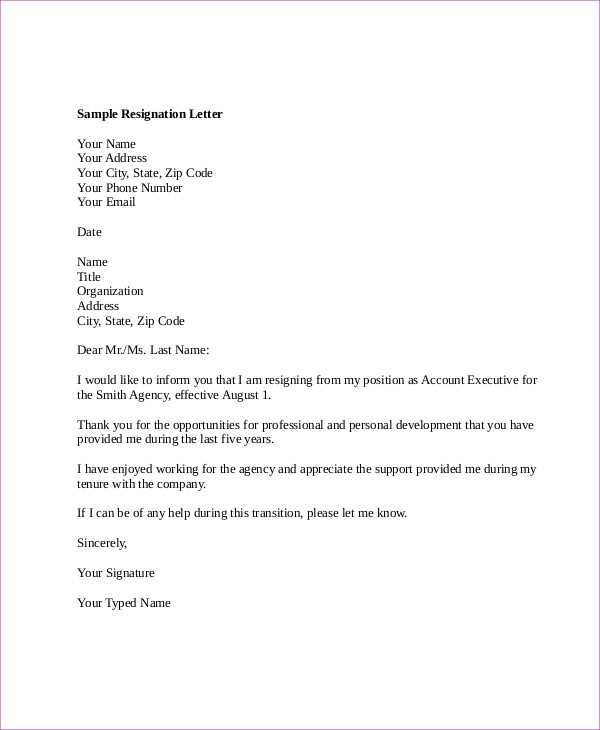
When you part ways with a company, leaving on good terms ensures that your network remains intact. This can be beneficial when seeking references or re-entering the job market. A courteous departure helps foster goodwill, which could open doors for future collaborations or job offers.
Avoiding Negative Impacts
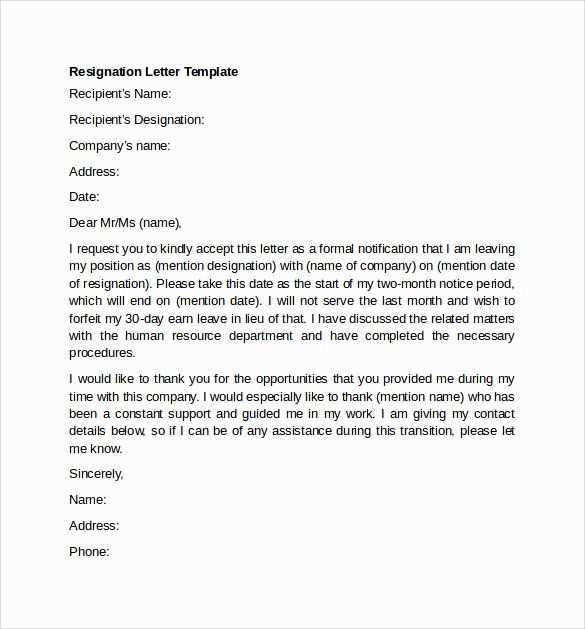
A poorly handled exit can have long-lasting negative effects on your career. Unprofessional actions can tarnish your reputation, making it more challenging to secure future roles. By maintaining professionalism, you protect your personal brand and preserve your career prospects in the long run.
Structure of a Well-Written Document
A professional departure message should follow a clear structure to ensure that it is polite, concise, and effective. Organizing your thoughts logically helps convey your decision while showing respect for your employer. This approach not only provides clarity but also reflects your professionalism and maturity in handling the situation.
Key Components to Include
- Introduction: State your intention to leave and the effective date. Keep this section brief and to the point.
- Reason for Leaving: You may choose to explain why you’re moving on, but this is not mandatory. If included, keep it professional and neutral.
- Gratitude: Express thanks for the opportunity, experience, and support during your time with the company.
- Offer to Assist with Transition: Show your willingness to help with the handover process to make the transition smoother for the team.
- Closing Statement: End on a positive note, reinforcing your appreciation and wishing the company continued success.
Writing with Clarity and Respect
Each part of your message should be direct but polite. Avoid unnecessary details or emotions, and focus on professionalism throughout. This balanced tone will help you leave a positive impression and maintain professional relationships going forward.
Common Reasons for Leaving a Job
There are various reasons why individuals may choose to leave their current position. These reasons can range from personal goals and career growth to external factors that make staying with the company less viable. Understanding these motives is essential for both the employee and employer to ensure a smooth transition and continued success in the workforce.
Typical Career and Personal Motivations
People often leave their roles for reasons that align with their long-term career goals or personal aspirations. Here are some of the most common factors:
| Reason | Description |
|---|---|
| Career Advancement | Seeking better opportunities for professional growth or a higher position elsewhere. |
| Work-Life Balance | Desiring more flexibility or time for personal matters, often due to family or health reasons. |
| Relocation | Moving to a different city or country, which makes continuing with the current role impractical. |
| Compensation | Looking for higher pay or better benefits not provided by the current employer. |
| Job Dissatisfaction | Discontent with the job duties, company culture, or management that drives an individual to seek a new position. |
External Factors Influencing the Decision
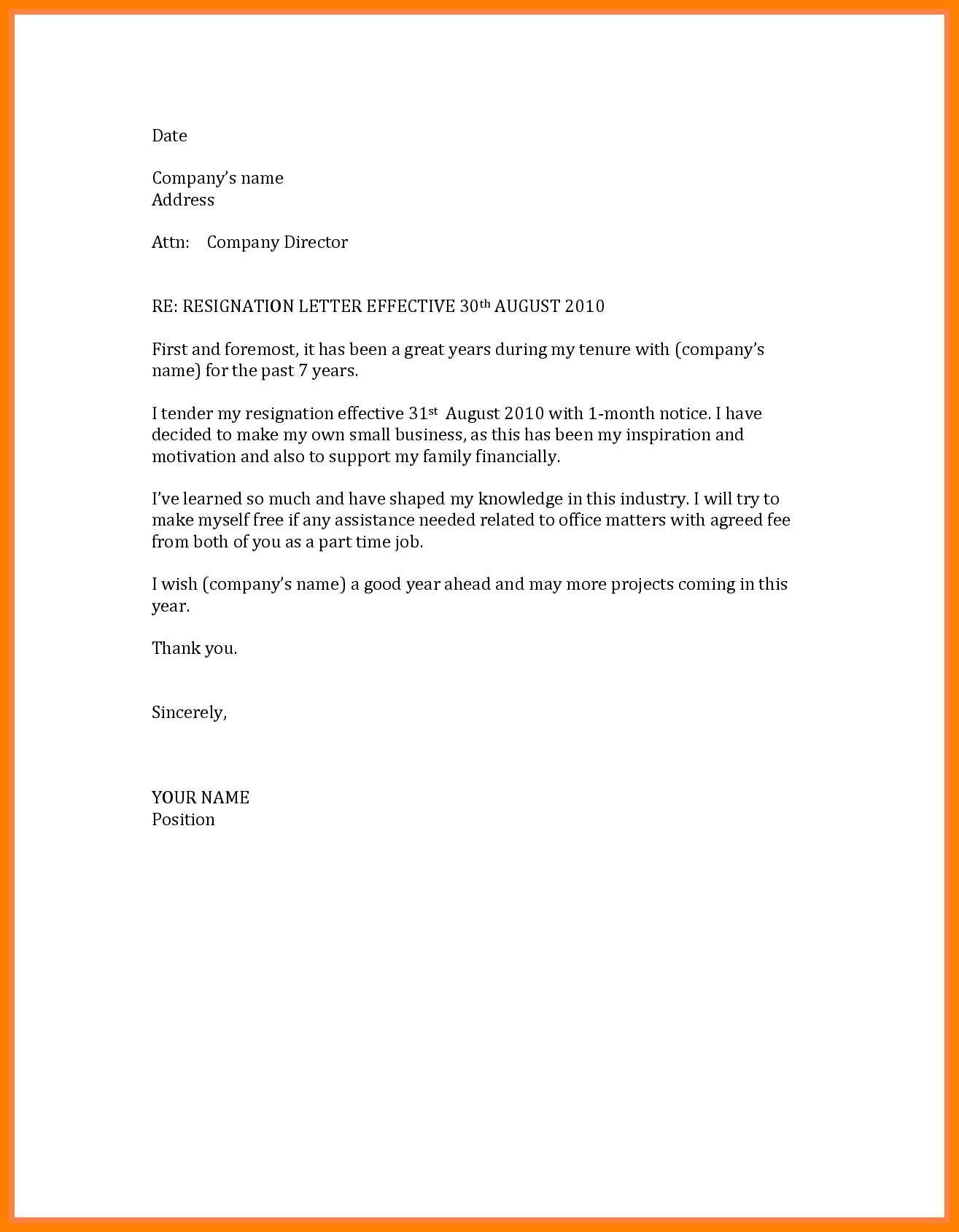
In addition to personal reasons, external factors can also play a significant role in the decision to leave a job. Economic changes, shifts in industry demands, or company-related issues such as downsizing or reorganization may push an individual to seek new opportunities.
How to Ensure a Positive Exit
Leaving a job on good terms is essential for maintaining your professional reputation and preserving future opportunities. A thoughtful and respectful approach during this transition can help you leave a lasting positive impression, ensuring that you are remembered well by both your colleagues and employer. Taking the right steps can make the difference between a smooth departure and a strained one.
Communicate Clearly and Early
One of the first steps in ensuring a positive exit is to communicate your decision in advance. Providing sufficient notice gives your employer time to plan for your departure and makes the transition process easier for everyone involved. Be clear and direct about your reasons for leaving, but keep the conversation professional and considerate.
Offer Assistance During the Transition
Offering to help with the handover of your responsibilities is a key part of leaving on a good note. Whether it’s training a replacement, documenting processes, or providing additional support to colleagues, your willingness to assist ensures that your departure does not disrupt the workflow. This gesture reflects your professionalism and leaves a positive impression on the organization.
Sample Departure Notice for Canada
Having a clear and professional message when leaving a job is essential for a smooth exit. The following example can serve as a guide for creating your own notification, ensuring that you communicate your decision respectfully and leave a positive impression on your employer. It can be adapted based on your specific situation, whether you are moving on for personal reasons, a new job, or any other factor.
Below is an example of a well-structured exit notification:
[Your Name] [Your Address] [City, Postal Code] [Email Address] [Phone Number] [Date] [Recipient's Name] [Company Name] [Company Address] [City, Postal Code] Dear [Recipient's Name], I am writing to formally inform you that I will be leaving my position as [Your Job Title] with [Company Name], effective [Last Working Day, typically two weeks from the date of the letter]. After careful consideration, I have decided to pursue new opportunities that align with my personal and professional goals. I want to express my gratitude for the support and opportunities provided during my time at [Company Name]. I have greatly valued my experience here and have learned a great deal. I am happy to assist in the transition process, whether by training a replacement or completing any outstanding tasks. Thank you once again for the opportunity to work with such a great team. I wish you and the company continued success in the future. Sincerely, [Your Name]
By customizing this sample with your details and reasons for leaving, you can ensure your message is both professional and clear.
Customizing Your Departure Notice for Specific Roles
When leaving a position, tailoring your message based on your role within the company is important. Different positions come with varying responsibilities, relationships, and expectations, and acknowledging these factors in your departure communication can help ensure a smooth transition. Customizing your message shows consideration for both your employer and the team, leaving a lasting positive impression.
For example, if you hold a leadership position, you may want to emphasize your efforts to ensure the continuity of the team’s work and express your commitment to a seamless transition. On the other hand, if your role is more operational, focusing on gratitude for the opportunity and offering to assist in closing your responsibilities would be appropriate.
For leadership roles: It is helpful to highlight your commitment to guiding the team through the transition. This could include offering to train or mentor someone to take over your duties or providing detailed documentation of ongoing projects.
For support or entry-level roles: A focus on appreciation for the opportunity and your willingness to assist in wrapping up pending tasks would be appropriate. In these cases, offering to train a colleague or complete any outstanding assignments reflects professionalism.
Customizing your departure message based on your position ensures that your exit is handled thoughtfully and professionally, regardless of your role within the organization.